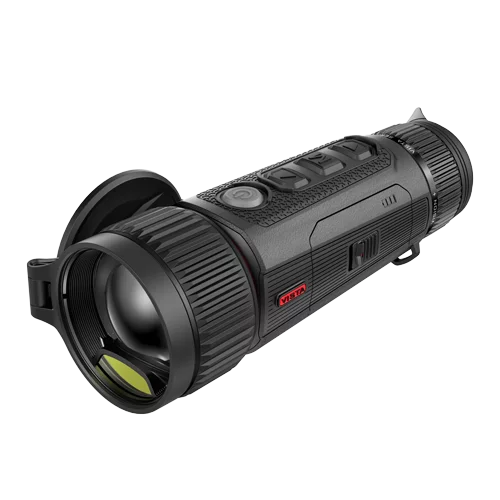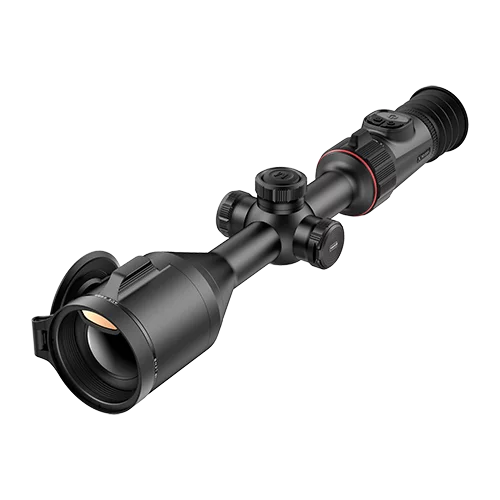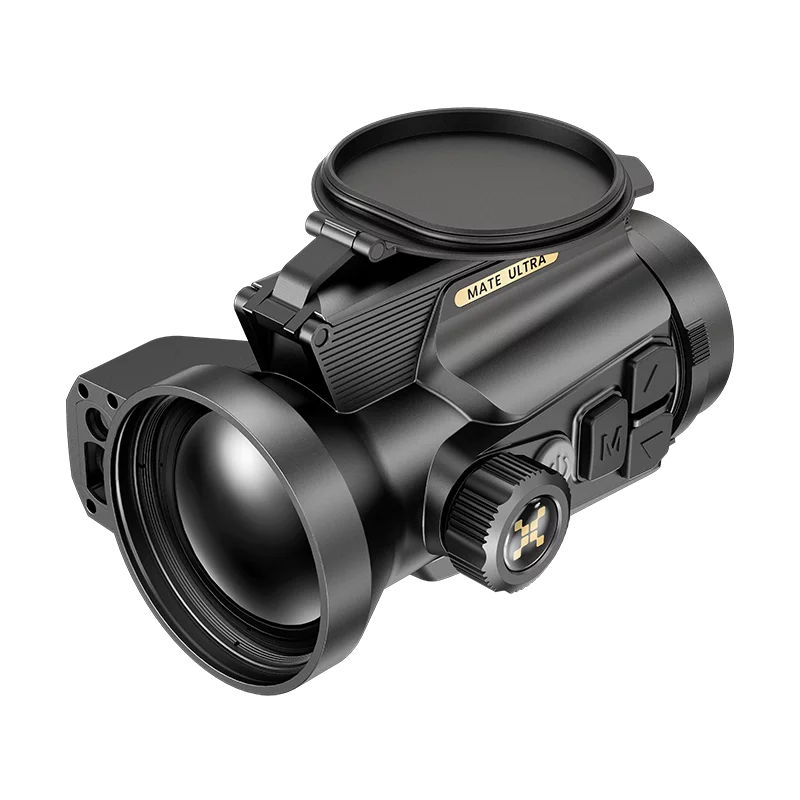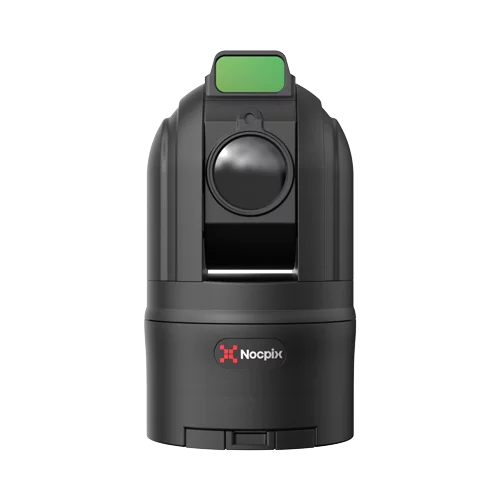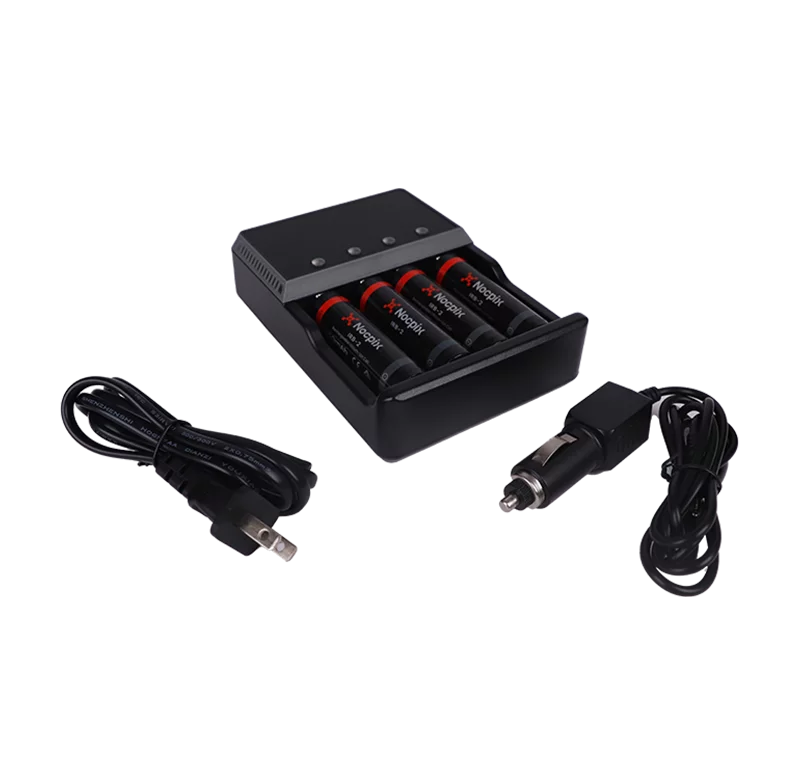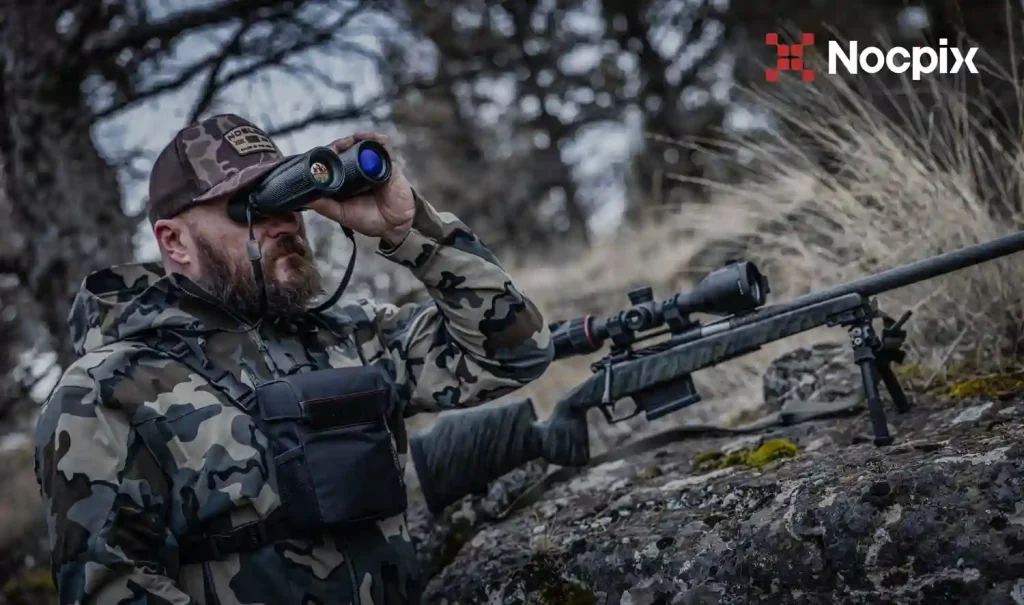For most people, night vision devices are professional tools that can perform visible imaging at night. But in today’s technologically advanced world, night vision products are a must-have tool for hunters. Night vision devices mainly include three categories: image intensifier night vision, digital night vision, and thermal vision. The topic we want to focus on is digital night vison and thermal vision which are widely applied in the civil field.
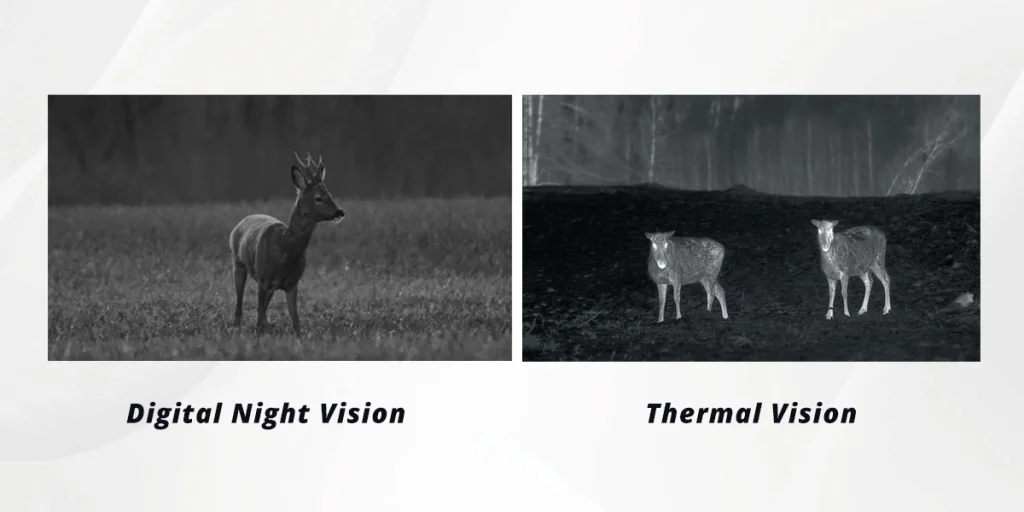
How Digital Night Vision and Thermal Vision Work
Digital night vision operates by converting even the faintest light into visible images. High-sensitivity CCD (Charge Coupled Device) or CMOS (Complementary Metal-Oxide Semiconductor) sensors capture ambient light, which is then transformed into electrical signals. These signals are digitally processed through the processor and refined by integrated software algorithms before being displayed on an LCD or OLED screen, creating a clear, visible imaging and reflection of real objects.
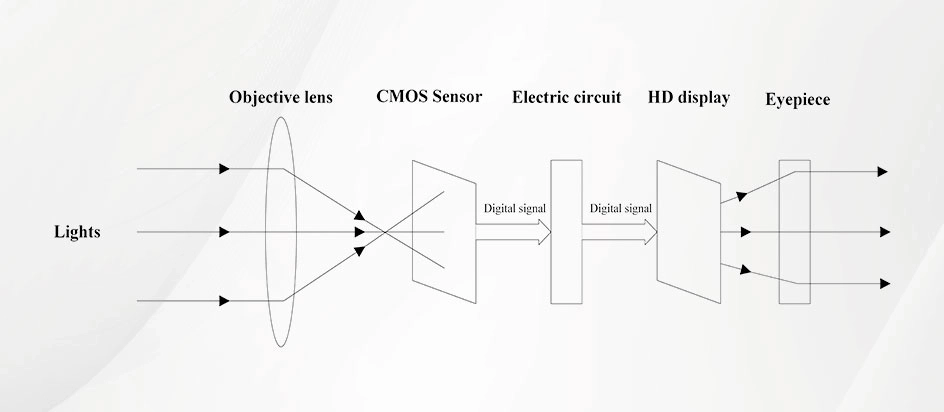
Thermal vision detects heat signatures, not light signatures. All objects with an absolute temperature above zero (-273°C) continuously emit infrared radiation that is invisible to the naked eye. Thermal vision devices, whether active (using a heat searchlight to illuminate the target) or passive (detecting the emitted infrared light), work by capturing this thermal radiation. The detected heat signature is processed by the system and converted into a “thermal image” that shows the distribution of heat.
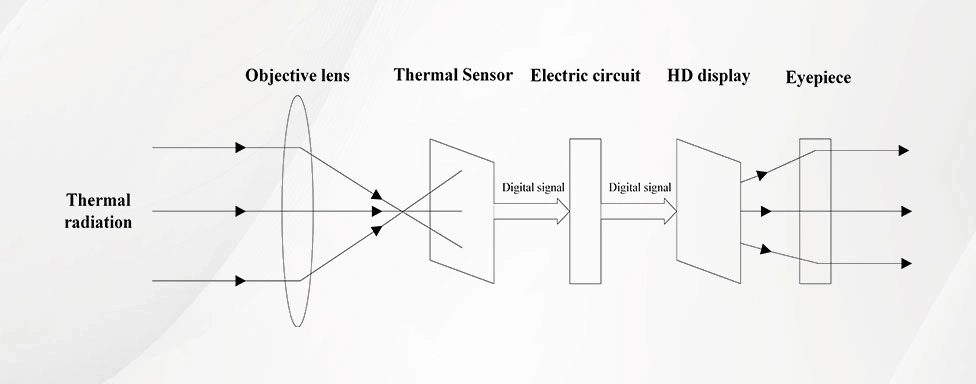
At the heart of a thermal imaging system is the thermal core. This core consists of two key components:
Thermal Detector: This converts invisible infrared radiation into measurable electrical signals. There are two main types: cooled detectors, typically found in military-grade devices, and uncooled detectors, which are the civilian mainstream. Nocpix, for example, is a leader in uncooled detector technology, having launched the world’s first 8μm infrared detector.
Image Processing Circuitry: This vital component optimizes and enhances the raw signals from the detector to produce high-definition thermal images, significantly impacting overall image quality.
NOCPIX’s expertise in thermal imaging infrared technology has led to core systems widely applied in areas such as nighttime surveillance, electrical equipment fault detection, medical temperature screening, and wildlife tracking.
Key Applications for Night Vision Devices
Both digital night vision and thermal vision devices are versatile tools used across a range of activities:
Wildlife observation and exploration
Night hunting and paintball games
Search and rescue operations
Night fishing and boating
Digital Night Vision vs. Thermal Vision
While both technologies allow you to see in the dark, day or night, their underlying principles lead to significant practical differences.
Image Presentation: Recognition vs. Heat Map: Digital night vision provides a realistic, recognizable image of targets, allowing you to discern their actual appearance. Thermal vision, conversely, displays a heat distribution map, which, while not realistic in appearance, excels at making heat-emitting objects stand out clearly against backgrounds, regardless of ambient light. This means a person will appear as a distinctive heat signature, even in complete darkness.
Detection Range and Environmental Impact: Digital night vision’s detection range is significantly affected by environmental factors and available light. Thermal vision, however, offers a remarkably longer detection range and performs exceptionally well in adverse conditions like fog, rain, smoke, or complete darkness, as it isn’t reliant on ambient light or visible spectrum. This makes it a superior choice when environmental factors are a concern.
Practicality in the Wild: Observation vs. Search: Digital night vision excels at detailed observation and allows users to navigate freely at night due to its true-to-life imaging. Although thermal imaging technology does not focus on the realism of imaging, it is essentially designed for “searching”. It is very effective for quickly locating targets or scanning large areas within a given range, because heat signals are usually easier to detect in low-light environments.
Cost and production: Digital night vision devices are generally more affordable than most mid- to high-end thermal imaging devices. The cost difference between the two comes from the fact that the production cost of night vision sensors and lenses is lower than that of thermal imaging sensors (the latter usually require metal lenses), and thermal imaging devices require higher technology, processes, and materials. However, as technology advances, the cost of thermal imaging devices is becoming more affordable, making their unique advantages available to a wider audience.

With continuous technological innovations, both digital night vision and thermal vision are becoming increasingly sophisticated and multifunctional. Beyond clear visible image quality, features like internal Wi-Fi, app connectivity, Picture-in-Picture (PIP) functions, and photo/video recording capabilities are making these devices more popular than ever. As production costs for thermal devices continue to decrease, more people will have the opportunity to explore and utilize these powerful tools in various environments.
Nocpix has a variety of thermal imaging products, such as BOLT Thermal Imaging Riflescopes, QUEST Thermal Imaging Binoculars, VISTA thermal Imaging Monoculars, etc.
Welcome to visit our official website to learn more about thermal imaging products: https://www.nocpix.com/category/products/



